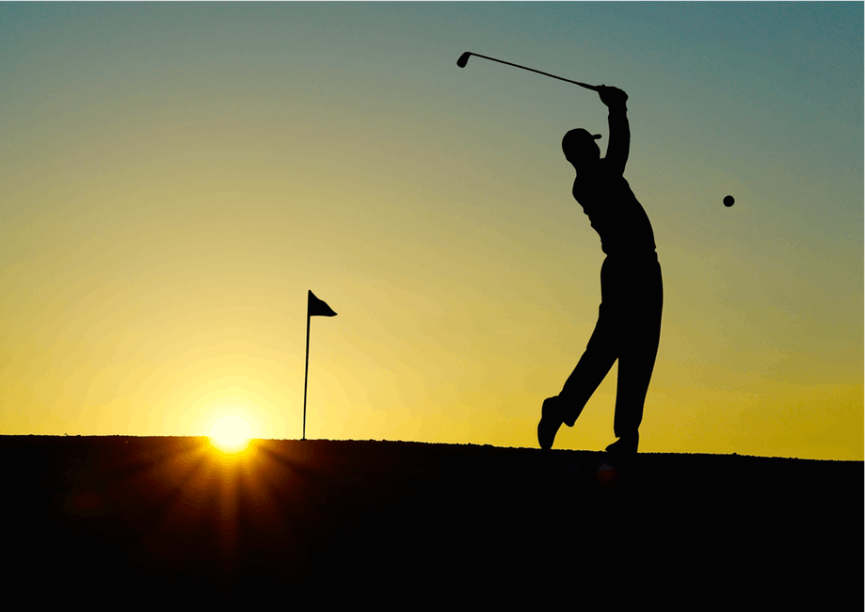You’ve been told that exercise is the key to a long and healthy life. While this is true, exercise isn’t without the risk of injury.
Plenty of healthy adults over 30 years old enjoy fitness routines. All exercises, though, from lifting weights to running, can take a toll on your body.
Even golf, an activity considered by many to be “low-activity,” can result in injuries. The explosive nature of a golf swing leads to several common golf injuries.
Golfers often experience aches and pains in several parts of their bodies. These minor pains could become problematic for your musculoskeletal structure if left unattended.
Don’t worry, though! There are ways to treat each of the most common golf injuries.
In this guide, we’ll explore common golf injuries and methods for rehabbing injuries when they come. Let’s jump right in, shall we? After all, your health may depend on it!
Golf Injuries: Golfer’s Elbow
Golfer’s elbow, or medial epicondylitis, is a condition characterized by pain in the tendon on the inside of your elbow. This tendon may seem like a difficult spot to injure, but golf finds a way to do it.
Golfer’s elbow stems from repeatedly gripping, flexing, and swinging your golf club. Over time, this can result in tiny tears and further irritation of the elbow tendon.
Rehabbing injuries like these is essential to ensure you remain in top health. So, follow these practices if you notice this pain.
First, avoid movements that aggravate this pain. During this time, you’ll have to stay home from the golf course.
From there, apply ice to the injured spot for 15-20 minutes, three or four times a day. If the pain becomes severe, you may take pain medication for relief. Unfortunately, standard treatments take a long time to restore your tendon to health.
Tennis Elbow
Surprisingly, tennis elbow is among the most common injuries for golfers. More golfers experience this injury than golfer’s elbow.
How does this injury differ from golfer’s elbow? Tennis elbow involves a sense of pain on the outer aspect of the elbow.
Often, this problem comes from hitting the golf ball improperly several times. If you find yourself suffering from it, there are some things you can do to rehab the injury.
First, rest from the game and other physical activity that aggravated the injury. Furthermore, ensure you ice the injury. Follow the same icepack schedule as that prescribed for golfer’s elbow, unless a physician tells you otherwise.
Once you recover, take steps to ensure you don’t get tennis elbow again. First, spend time strengthening your forearms. Second, make sure you always use proper form when swinging.
Lower Back Injuries
Golfers often experience lower back pain after long periods of practice or lengthy matches. The source of this pain isn’t hard to identify.
After all, golfers spend much of their time bent over the golf ball as they prepare to swing. This bent posture can wear on your back muscles.
To make matters worse, the rotational stresses involved in the golf swing can put tremendous pressure on the spine and back muscles.
Fortunately, rehabbing injuries in the lower back is often straightforward. If you experience mild pain in your back, take a few days off from the game. Give your back time to recover.
From there, start doing core strengthening exercises and a stretching regimen. These measures keep your back loose, limber, and strong. As a result, you should reduce the frequency of lower back pain.
Common Golf Injuries for the Hands and Wrists
When you master the golf swing, you move in a swift, explosive movement several times for 18 holes. Sometimes, those movements add up and place your wrists, hands, and fingers at risk of injury.
As you repeatedly swing your club, it acts as a repetitive blunt force trauma for these parts of your body. Over time, it can result in deformed or broken bones. On the less extreme side, it can cause small tendon injuries in your body.
Fortunately, there are ways to rehab or prevent these injuries. Typically, this involves going through a golf-specific conditioning program. Proper grip form and gloves can also help protect your hands and fingers.
Rehabbing More Severe Injuries
You may have noticed that some treatments for common golf injuries take more time than you’d like to mend your body. During that time, you have to rest and avoid physical activity.
This need for rest can be a challenge for many people. However, if the injuries progress, this rest could be the least of your problems.
Instead, you may find that you have worse pain in your elbow or lower back than you can handle. In these situations, standard rehab solutions may not work quickly enough. Instead, you need a new way to relieve the pain quickly.
In times like these, platelet-rich plasma therapy can be the ideal solution. This medicinal approach is a safe, non-invasive method that uses your body’s natural systems to heal itself.
How does it work? Platelet rich plasma (PRP) therapy extracts plasma from your own bloodstream. Within this plasma are platelets, essential cells for stimulating your body’s healing systems.
From there, doctors inject the platelets into the injured part of your body. Once the platelets arrive, they stimulate the other cells in the area to help heal the injury.
PRP treatments take approximately thirty minutes to complete. They produce much faster results without needing to add any foreign substance to your body.
Finding the Best PRP Therapy
Suffering these common golf injuries could be a reason for using PRP therapy. However, you may run into trouble finding a PRP clinic in your area.
If you leave near Allentown, Pennsylvania, call us today to schedule an appointment. We offer excellent PRP resources to help your body recover from its injuries. We’ll have you feeling your best in no time!

